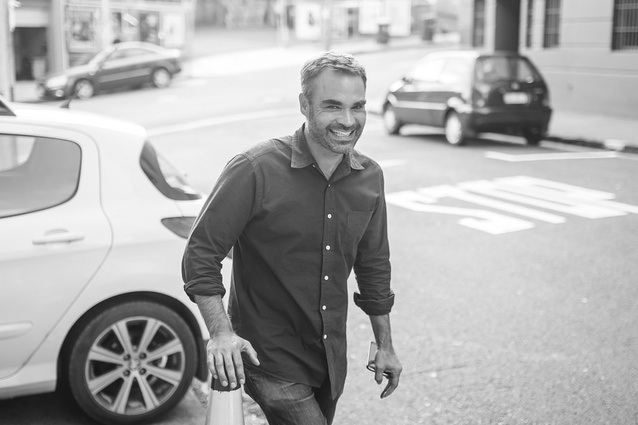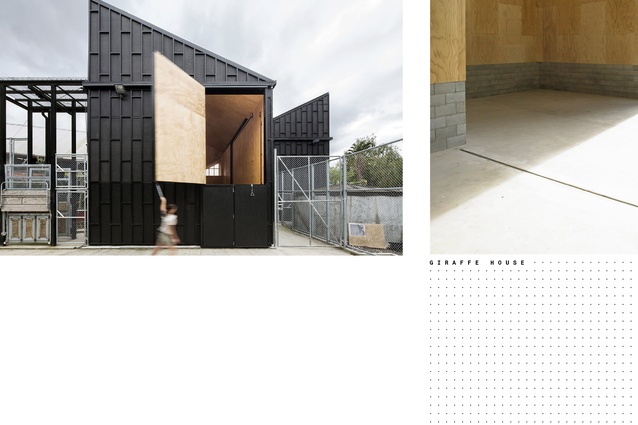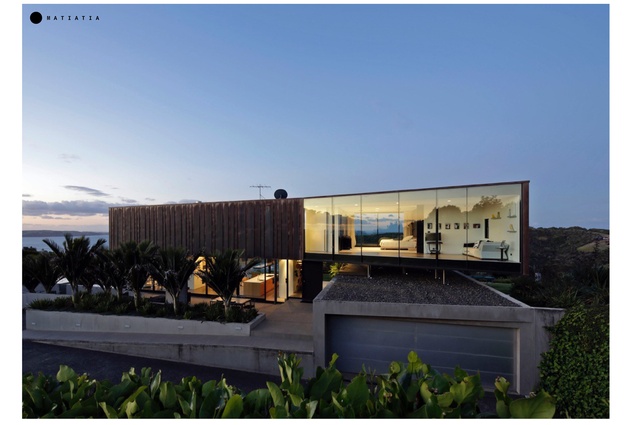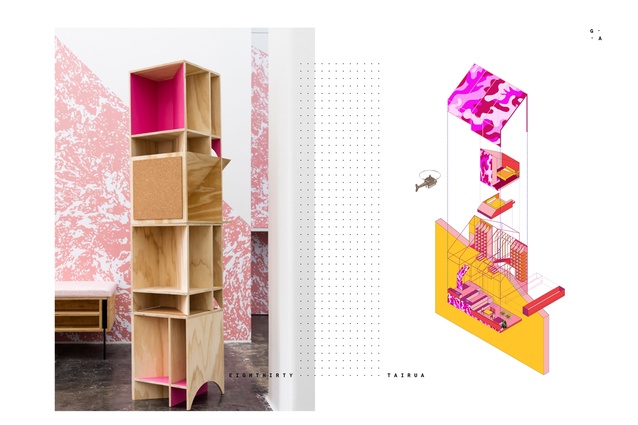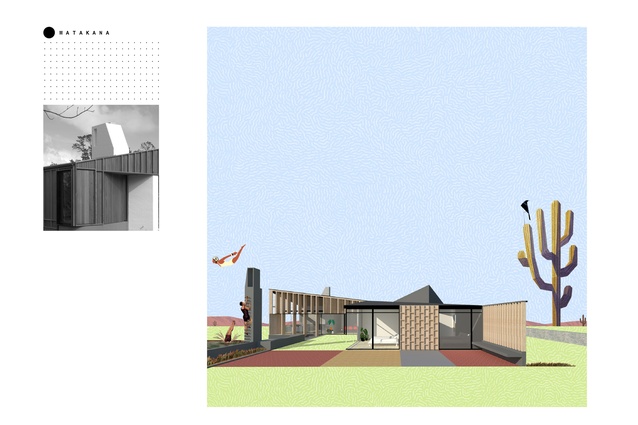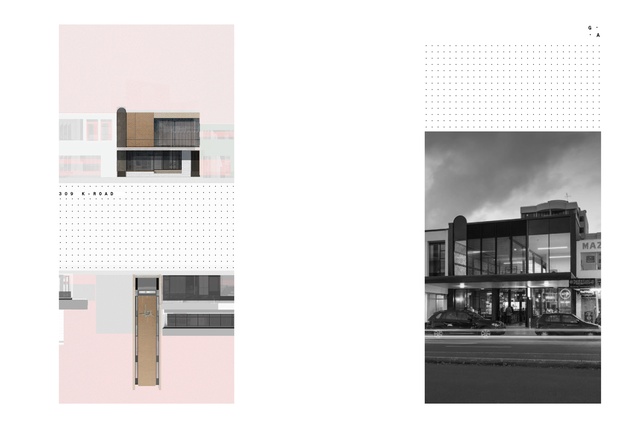Architect profile: Dominic Glamuzina
Dominic Glamuzina started his own practice in 2000, soon after graduating from the University of Auckland. In 2007 he joined forces with Aaron Paterson to open Glamuzina Paterson Architects, and in early 2015 the two parted ways and Glamuzina Architects, based in Cross Street, Auckland, was re-born.
Amelia Melbourne-Hayward sat down with Dominic to discuss the future direction of the new practice, the ever-changing nature of K Road and the role of the architect today.
Amelia Melbourne-Hayward: How is the new practice going, it must be tough to start again in a sense?
Dominic Glamuzina: It’s tough but it’s a good opportunity to start again; to reframe. Of course, getting the practice started, managing staff and just keeping it afloat hasn’t really allowed me much time to strategise or to get to that place where I can sit back and relax.
AMH: Do you think you’re at that point now a little bit more?
DG: Yes, I can be cynical, but I think I’m at a point now where I’m super optimistic about where the practice is at and about the projects that we’re getting. That’s the thing when you have to start again, people come to you because you are a cost-competitive smaller practice, not because you have necessarily done something really interesting!
I’ve learnt that the market has become very tough, it’s busy as anything and competitive but the public perception of what we can deliver is often misunderstood.
AMH: Is that because of the proliferation of websites and TV shows etc that focus on architecture and design – everyone thinks they’re an architect?
DG: It’s the black magic of TV and media in general, but it’s definitely become a problem, which has been a bit frustrating. I’ve had the continuity of projects from my old practice, but certainly new projects are quite challenging.
It seems to be that I will get the projects in and do a lot of work on them, but people don’t want to engage with the reality of what it costs to build. From now on, I’m sticking to brutal honesty – I don’t want to be that architect that goes over budget!

AMH: Do you think that despite all the information available, people still don’t really have an idea of what it is that architects actually do or how they can add value?
DG: Definitely. We are losing control of important aspects of the process of delivering a project, both from consultants and clients. Project managers are eating in at one end of a project, and at the other, clients are saying “don’t you worry about this, I’ll go to council and sort all this out”, while not necessarily understanding the importance of retaining that architectural oversight.
It makes it harder to sell what you do these days because there’s so much aestheticized information available. I don’t know if that’s a good or bad thing, I think it’s just the nature of it. The issue is that apparently all we sell is aesthetics. That’s the fundamental flaw in architecture… that suddenly we are the stylists. It’s actually about seeing where we can add value in a range of situations.
With the new practice we’re examining how we can use a brief to talk about things which are not just about beauty or ‘what your house is going to look like’, but a deeper understanding of the space and programmatic relationships.
But it’s a big issue, especially in New Zealand, where there’s a vacuum in terms of criticism or deeper writing about the values and skills that are required in building a city. We don’t have many people – or even anybody – that are willing to ask if something is actually good. Nobody wants to be critical.
AMH: What are your rough plans for the practice, you’ve completed a lot of residential work, are you hoping to work on other typologies?
DG: A lot of the projects we’re doing now are actually bigger typologies. I really want the practice to have a wide range of scales, complexities and programs, and we are focusing on that. I’m constantly looking at how can we get propositions with a wider understanding of value.

AMH: What other aspects around starting a new practice are you excited about?
DG: I’m interested in going back and looking at how many speculative projects we did that never actually happened – the detritus of what you do in concept design that you were obviously really excited about – but then the QS kills it, or the client doesn’t get it. Quite often we’ll take those ideas that we still think are great and continue to push them further.
I like that whole idea of continuing to speculate. I’m really interested in doing something for Cross Street because one day it’s going to be cobbled and be a ‘shared space’, and I will be gutted if I don’t get in first! I’ve also been trying get a website going, although our focus recently has more been on social media.
AMH: Yes, you’re pretty active on Facebook and Instagram.
DG: Yes, reasonably, because of the lack of a website, we need some sort of a forum to express ourselves. Social media also allows us to post the ideas we’re thinking about, and all the behind-the-scenes work you never really see or hear about in an architectural practice. Architects never talk about those things, what you will generally hear is, ‘this is my amazing rendering, this is what I do’, but there are so many interesting processes that go on in practice that you just don’t see.
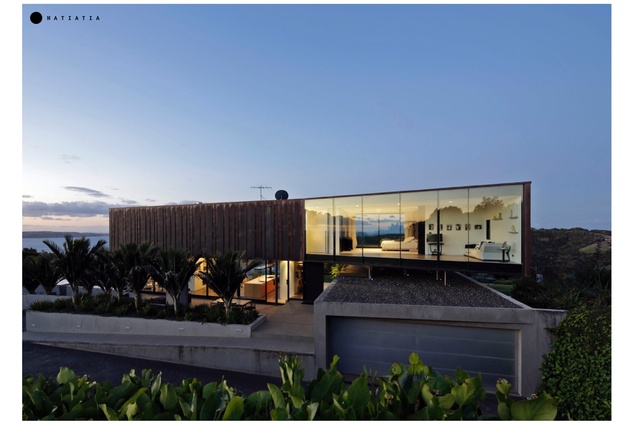
AMH: How long can you spend working on a design for it to be completely tossed? Do you then feel like that is a waste of time, energy and money, or is that just part of the job?
DG: I’ve got a quite a few projects that I’ve spent way too much time on, but I’d much rather push energy, money or labour back into that, because it just brings joy even if it doesn’t get built.
AMH: It would be a shame to lose that creativity. I’m sure a lot of the reason you got into architecture was to create designs that excite you, even if they don’t end up becoming a reality?
DG: Absolutely, it’s the thing that drives me forward. I’ve actually become really good at walking up K Road and seeing projects that we’ve done and being happy with them, but I am also aware that there are so many design ideas that they have generated that need to be developed further.
AMH: What are some of your recent projects that you’ve enjoyed working on?
DG: One of the coolest projects I’ve had for a long time is with eighthirty, which has been rolling out cafés every time there’s the opportunity. We’re just about to do their new roastery, which is down Anzac Ave in Auckland’s CBD.
Working on eighthirty in High Street was really enjoyable; it was about moving away from the generic language that most cafés use. The brief was to almost make it uncomfortable, a little like a generic office, which becomes a backdrop to allow [artist] Yolunda Hickman‘s work to really shine. It’s been a really successful space.
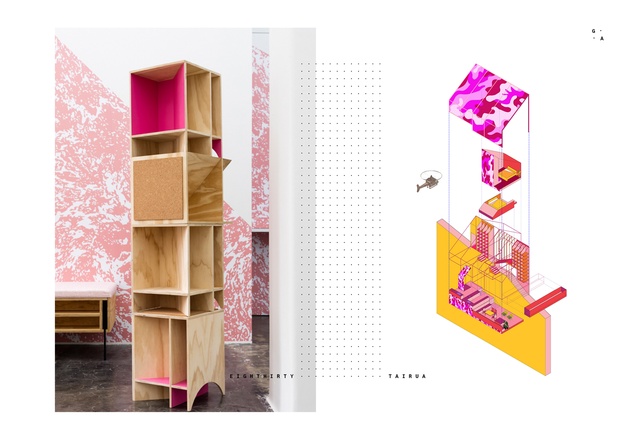
We’ve also worked on a few other commercial projects on Karangahape Road [K Road] recently. There has been a lot of debate about how K Road is being gentrified and is going to lose its grittiness, so we put a lot of consideration into how to deal with the spaces and programs and how they fit into the fabric of K Road.
I’m interested in projects that allow you to say, ‘we can add a value that’s beyond short-term monetary gain’. Over a long period of time, that value will be monetary, but it’s actually a wider kind of connective value to the community that will make it a success.
AMH: Are there any projects you’re working on right now that you can talk about?
DG: Some of them are under wraps, but one large project is based in the far north. It is a multi-faceted program that works with ideas of tourism and placemaking, with an educational focus that involves the local community. We’ve only just started, so you never know exactly where the project is going to go, but it’s the type of ‘broad value’ project that I’m really excited about.
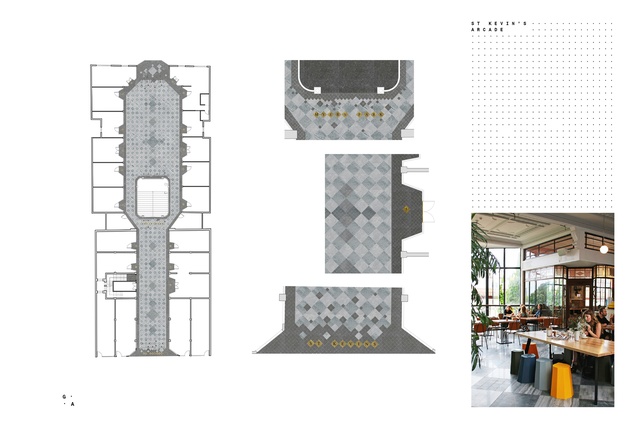
AMH: Are you still teaching at the University of Auckland?
DG: Yes, I’m teaching thesis and I’ve got two students, one is doing a cooperative housing project, which I’m passionate about – I might have slightly muscled her that way!
I also teach with [architect] Sue Hillery; we just did a paper on the nature of K Road. I’ve been here for a long time and love this place, but it’s definitely changing. I’m really aware that I’m an architect working in an old art gallery in K Road, and that architects are some of the biggest gentrifiers. It’s a really tough one, I feel like I’m sinning in a way! So while I’m doing work for developers in K Road, I try to make sure I understand it and do my best here, even though usually only 50 per cent of what we want is actually delivered in the end.
To be able to do the more speculative projects with university is good, as you get to critically test ideas. Teaching is really important to me, it forces you to learn and to read, I don’t know how architects don’t do it to be honest. The department does a really good job, they’re trying to make sure that the course continues to have practitioners teaching. That’s a really important connection that we wouldn’t want to lose.
AMH: Did you have a look into what the recommendations were for the Unitary Plan – is there anything you would change?
DG: In terms of opening up the boundaries, I wouldn’t have done that on the scale that they did. Spreading out further without infrastructure is slightly ridiculous. But overall it’s a good start, I think it’s around 70 per cent there. Hopefully developers will have to move with the market and start thinking, ‘okay, people want interesting, well-designed apartments, ones that are able to change over time’. The public will get the opportunity to see good value medium density. We’ve already had it for years in Freemans Bay and Greys Ave.
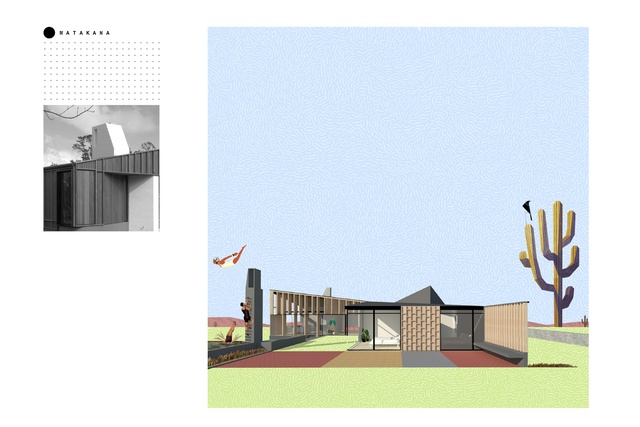
AMH: Finally, can you tell me a few of your design or architectural influences?
DG: It’s such a generic thing to say, but my favourite architect is Rem Koolhaas. I just love the way he operates.
AMH: What do you like about his work or his philosophy?
DG: He talks about things that are so far beyond architecture – he talks about culture and politics, he builds, he writes, he’s just a really important thinker.
Amongst many others, I also enjoy the work of Sam Jacob of FAT, I’ve always been interested in the eclectic nature of his work, it’s an eccentric and interesting language that talks about contextualism, politics and history. We’re not playful enough as architects.
In New Zealand, Claude Megson’s houses are spatial madness, and I’ve always liked how John Scott dealt with roof forms. The Kiwi architects that I admire the most have a really broad practice. They don’t sit on their laurels, they just keep re-inventing themselves. That’s the direction I’d like my practice to go.

